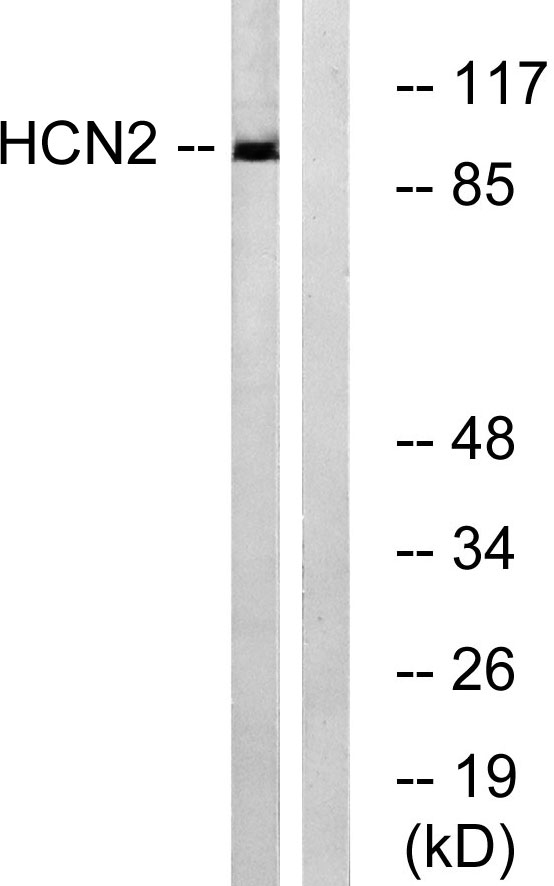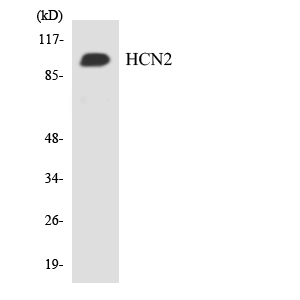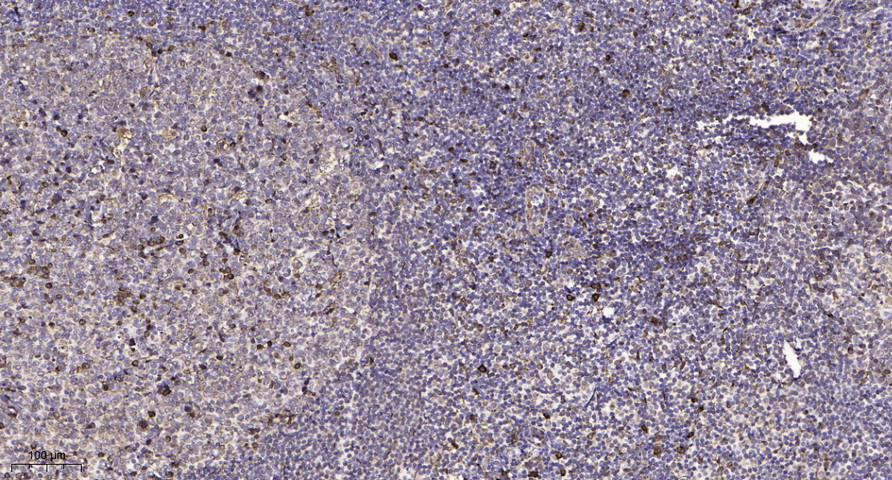HCN2 Polyclonal Antibody
- Catalog No.:YT2111
- Applications:WB;IHC;IF;ELISA
- Reactivity:Human;Mouse;Rat
- Target:
- HCN2
- Fields:
- >>cAMP signaling pathway;>>GnRH secretion
- Gene Name:
- HCN2
- Protein Name:
- Potassium/sodium hyperpolarization-activated cyclic nucleotide-gated channel 2
- Human Gene Id:
- 610
- Human Swiss Prot No:
- Q9UL51
- Mouse Gene Id:
- 15166
- Mouse Swiss Prot No:
- O88703
- Rat Gene Id:
- 114244
- Rat Swiss Prot No:
- Q9JKA9
- Immunogen:
- The antiserum was produced against synthesized peptide derived from human HCN2. AA range:491-540
- Specificity:
- HCN2 Polyclonal Antibody detects endogenous levels of HCN2 protein.
- Formulation:
- Liquid in PBS containing 50% glycerol, 0.5% BSA and 0.02% sodium azide.
- Source:
- Polyclonal, Rabbit,IgG
- Dilution:
- WB 1:500 - 1:2000. IHC 1:100 - 1:300. ELISA: 1:40000.. IF 1:50-200
- Purification:
- The antibody was affinity-purified from rabbit antiserum by affinity-chromatography using epitope-specific immunogen.
- Concentration:
- 1 mg/ml
- Storage Stability:
- -15°C to -25°C/1 year(Do not lower than -25°C)
- Other Name:
- HCN2;BCNG2;Potassium/sodium hyperpolarization-activated cyclic nucleotide-gated channel 2;Brain cyclic nucleotide-gated channel 2;BCNG-2
- Observed Band(KD):
- 100kD
- Background:
- Hyperpolarization-activated cation channels of the HCN gene family, such as HCN2, contribute to spontaneous rhythmic activity in both heart and brain.[supplied by OMIM, Jul 2010],
- Function:
- domain:The segment S4 is probably the voltage-sensor and is characterized by a series of positively charged amino acids at every third position.,function:Hyperpolarization-activated ion channel exhibiting weak selectivity for potassium over sodium ions. Contributes to the native pacemaker currents in heart (If) and in neurons (Ih). Produces a large instantaneous current. Activated by cAMP. Modulated by intracellular chloride ions and pH; acidic pH shifts the activation to more negative voltages.,miscellaneous:Inhibited by extracellular cesium ions.,similarity:Belongs to the potassium channel HCN family.,similarity:Contains 1 cyclic nucleotide-binding domain.,subunit:The potassium channel is probably composed of a homo- or heterotetrameric complex of pore-forming subunits. Heteromultimer with HCN1. Interacts with KCNE2.,tissue specificity:Highly expressed throughout the brain. Detected at
- Subcellular Location:
- Cell membrane ; Multi-pass membrane protein .
- Expression:
- Highly expressed throughout the brain. Detected at low levels in heart.
- June 19-2018
- WESTERN IMMUNOBLOTTING PROTOCOL
- June 19-2018
- IMMUNOHISTOCHEMISTRY-PARAFFIN PROTOCOL
- June 19-2018
- IMMUNOFLUORESCENCE PROTOCOL
- September 08-2020
- FLOW-CYTOMEYRT-PROTOCOL
- May 20-2022
- Cell-Based ELISA│解您多样本WB检测之困扰
- July 13-2018
- CELL-BASED-ELISA-PROTOCOL-FOR-ACETYL-PROTEIN
- July 13-2018
- CELL-BASED-ELISA-PROTOCOL-FOR-PHOSPHO-PROTEIN
- July 13-2018
- Antibody-FAQs
- Products Images

- Western blot analysis of lysates from Jurkat cells, using HCN2 Antibody. The lane on the right is blocked with the synthesized peptide.

- Western blot analysis of the lysates from HT-29 cells using HCN2 antibody.

- Immunohistochemical analysis of paraffin-embedded human tonsil. 1, Antibody was diluted at 1:200(4° overnight). 2, Tris-EDTA,pH9.0 was used for antigen retrieval. 3,Secondary antibody was diluted at 1:200(room temperature, 45min).



